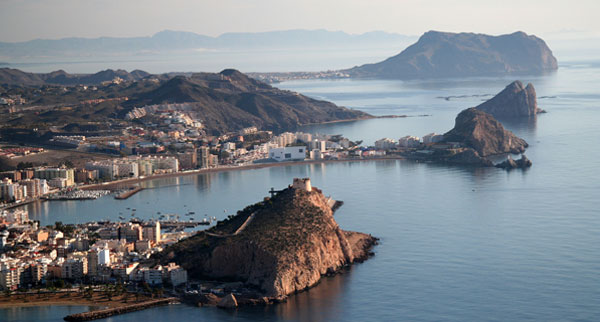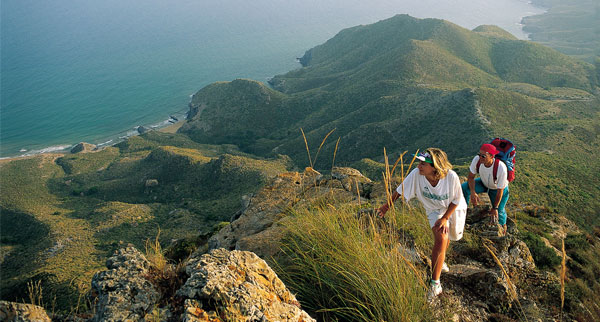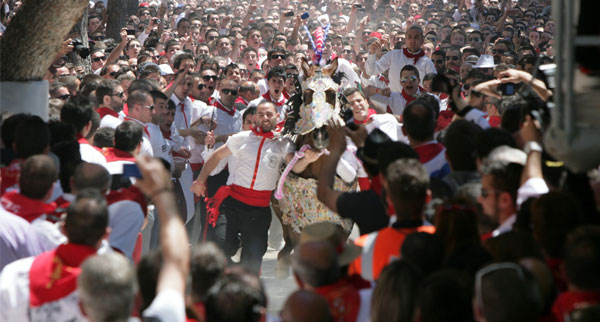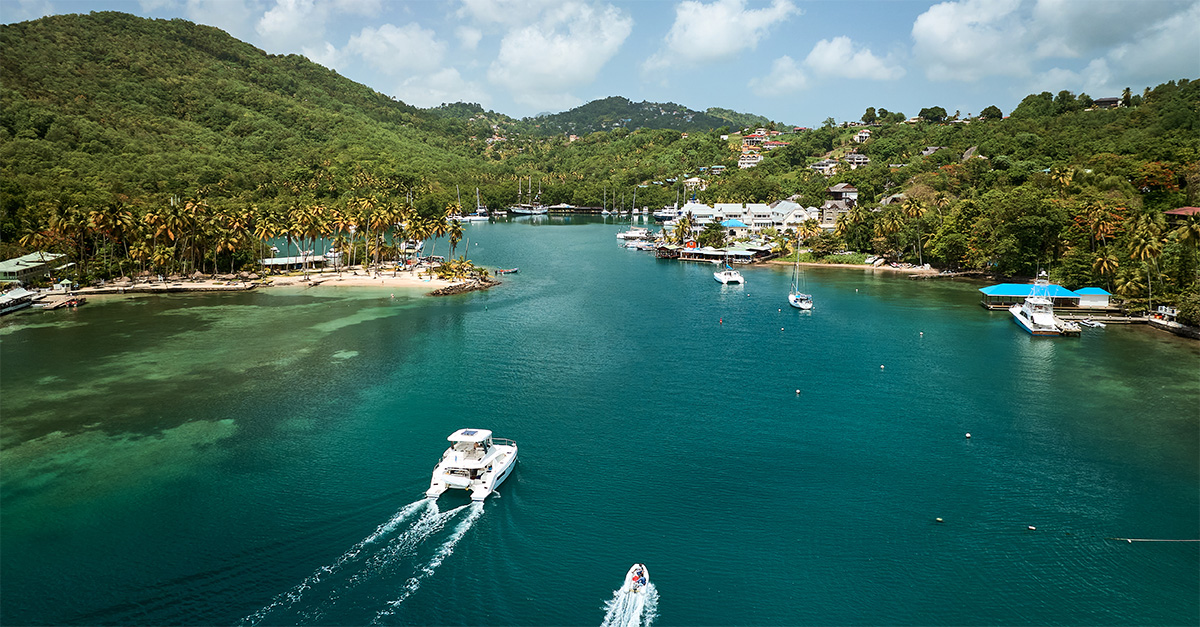Forget lounging around on the beach: Murcia has much more to get sporty types on side, finds Laura French.
Like this and want more details? Click here to download and save as a PDF.
‘Madre mia!’ shouts our guide, in a rather alarming tone that has me thinking our boat must be about to sink. But there’s no need to reach for the life jackets just yet; it turns out he’s spotted a giant sperm whale in the middle of the Med, and it’s putting on quite a show.
Up out of the water, the creature jumps, rearing a huge head and flopping back down with a gigantic slap against the water, in an attention-grabbing display that has all of us entranced.
We’re on a marine trip off the coast of Mazarrón in Murcia, a region that goes far beyond the sun, sand and sea formula that tends to be associated with Spain’s southern coast.
Much of Murcia is in fact authentically Spanish, filled with sleepy villages, emerald vineyards and ancient religious buildings that tell of its rich cultural heritage. It also happens to be an adventure lover’s paradise, with hiking, biking, sailing and watersports aplenty taking place under blindingly blue skies and year-round sun.
That makes it an ideal destination for both active and culture types looking to escape the hordes of tourists they’ll find just a little farther east. And with average temperatures of 15C in November and 16C in April, it’s a good choice for those jetting off out of season.

Splash time
For watersports enthusiasts, the 150-mile long Costa Calida – located in the south and set partly on the secluded Mar Menor – ticks all the boxes. Among its highlights is Aguilas, a Roman port town surrounded by dramatic cliffs and overlooking an expanse of deep blue, where diving, windsurfing, kayaking and paddleboarding are all on offer.
I tried my hand at the last two, both of which are a great way to discover a handful of the 35 beaches lining the town’s coast. Nothing beats paddling your way in and out of rocky coves surrounded by clear, sparkling turquoise water.
Over in Puerto Mazarrón, clients will find fishing, surfing and yet more diving, alongside a number of quiet sandy beaches. But for those after a more leisurely way to enjoy the water, a dolphin-watching trip is a surefire hit (€50 for adults). Although you might not be able to promise a sperm whale leaping up into the air, pilot whales are common, and we had a group of eight elegantly darting around our boat, coming so close that I got a rather unexpected spray in the face at one point. cetaceosynavegacion.com

On dry land
If clients are looking to get active without getting wet, direct them to the Via Verde, a 50-mile route from Murcia to Caravaca de la Cruz which winds its way through bright green fields, sprawling vineyards and traditional Spanish villages such as Cehegín, where the pace is happily slow and the coffee ridiculously good. An ancient pilgrimage route, it’s now popular with cyclists and walkers, and I got a taste of the final 15 miles on a guided bike tour with local excursion provider Entre Tierras (from £32).
Gliding along on two wheels, cooled by a gentle breeze and warmed by a glaring sun, was one of the most serene experiences of the trip, and given that most of this final part is downhill (and off-road) you don’t need to be super-fit.
For any hardcore adventurers seeking a bit more of a challenge, recommend they do the whole thing – it only takes a day and provides an excellent glimpse into the diversity of the region’s landscapes.
There’s plenty in the way of hiking too, with several nature parks in the region, including Sierra Espuna, a 25,000-hectare chunk of green dotted with pine trees and mountain peaks. These are the features that characterise the whole region – patchworks of green and brown jutting out of arid, moon-like landscapes.

Cultural highs
If it’s more culture than adventure that clients are after, direct them to the capital, Murcia, founded by the Moors in 825. Here, traces of its Islamic heritage, the dominant influence for more than five centuries, meet baroque churches, ornate plazas, designer boutiques and an incredibly elaborate, gothic cathedral.
The city isn’t short on food options – in fact, it’s regarded as the home of tapas, with signature dishes like la marinara (creamy tuna salad and fresh anchovies on a breadstick) available all over. The best place to sample it all is La Tapa, a rustic-meets-modern restaurant where locals come for the likes of whitebait in tomato vinaigrette and salted cod in a crispy pork crust. latapadelasflores.com
Less than an hour south of Murcia lies Lorca, famous for its ancient fortress and synagogue, which visitors can explore with an audioguide (entry €5). And to delve even further into the region’s religious history, suggest Caravaca de la Cruz. It’s home to an elaborate, baroque-style temple as well as an interesting museum dedicated to Los Caballos del Vino, an annual festival which sees participants run alongside horses decked out in glittering, hand-embroidered costumes.
It’s not the only fiesta in Murcia’s calendar. February sees the arrival of carnival, most fervently celebrated in Aguilas, where colourful parades, feathered costumes and street parties bring life to the sun-drenched streets. It’s an ideal time to send clients looking for a properly authentic experience, and marks an appropriate ode to the spirit of happiness, heritage and vitality which seems to characterise the region year-round.
Top tip
Find out more about the Murcia region at murciaturistica.es
Where to stay
Hotel Puerto Juan Montiel, Aguilas:Set right by the port, this four-star hotel makes an ideal base for adventure-seekers and it’s also the highest-rated abode in the area, with huge, apartment-style rooms overlooking the sea. Clients can book water sports on site, but for those less keen on the active part there’s a good spa offering Jacuzzis, saunas and a comprehensive range of spa therapies (chocolate body treatment, anyone?). From £47 a night. hotelpuertojuanmontiel.com
Hotel Tryp Rincón de Pepe, Murcia:This stylish Meliá outpost is located centrally with modern, spacious rooms, but its crowning glory lies in the extras – an atmospheric bar, decadent casino and elegant restaurant, where dishes look like works of art and the fish is so tender it melts in your mouth. From £42. melia.com
Hotel Playa Grande, Mazarrón:For clients after a good-value stay, suggest Hotel Playa Grande. Set right in front of the beach, it offers simple, traditional rooms in a friendly environment, and the outdoor patio is ideal for seaside lunches. From £47. hotel-playagrande.com
Hotel Parador de Lorca, Lorca:Designed in a similar style to the fortress by which it sits, Hotel Parador has huge, stylish rooms – think mahogany hues and great castle views – plus an indoor pool and spa. The restaurant serves dishes like arroz caldoso, but it’s the inventive desserts – my favourite was the white chocolate soup – that stand out. From £55. parador.es
Sample product
Saga offers an all-inclusive seven-night stay at Hotel Puerto Juan Montiel from £449 including flights and transfers, plus two excursions. Guests can book water sports at the hotel for an extra charge. travel.saga.co.uk
A three-night stay at El Churra Hotel in Murcia starts at £229 with Jet2holidays, based on room-only accommodation and flights from Manchester departing October 10, with 22kg luggage allowance. tradesite.jet2holidays.com
Getting there
Monarch operates year-round flights to Alicante from Birmingham, Gatwick, Luton, Leeds Bradford and Manchester, with fares from £44 each way or £90 return. monarch.co.uk




